Guest blog – Walshaw Turbine 6 by Nick MacKinnon – Mark Avery


Nick MacKinnon is a freelance teacher of Maths, English and Medieval History, and lives above Haworth, in the last inhabited house before Top Withens = Wuthering Heights. In 1992 he founded the successful Campaign to Save Radio 4 Long Wave while in plaster following a rock-climbing accident on Skye. His poem ‘The metric system’ won the 2013 Forward Prize. His topical verse and satire appears in the Spectator, and his puzzles and problems in the Sunday Times and American Mathematical Monthly. Email: nipmackinnon@gmail.com
Turbine 6 Warcock Hill Side SD 93689 34954 ///haggis.energetic.romantics
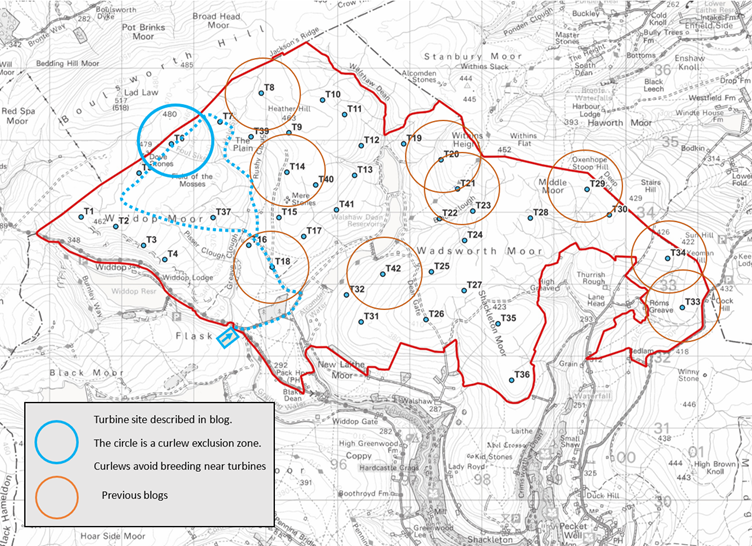
1 September 2025 As Ali and I set out on our walk to T6, we have no idea that waiting for us when we get home will be the Scoping Report for Calderdale Energy Park. I’m writing up the blog two weeks later. For the last fortnight Lydia and I have been sitting at either end of our kitchen table working our way through the Scoping Report and writing a detailed response to our chapters. We note things that are missing and things that are wrong.
I am not going to say what we found until after the deadline for submissions on 29 September 2025. SR, as we call it, has 577 pages. The Domesday Book has 913 pages. Stronger Together have divided up the chapters and Walshaw Turbines Research Group (WTRG), the group who do this blog, have Access and Transport, which has been a speciality, and Noise.
Some on the right pontificate about the uselessness of a humanities education compared to STEM. As a mathematician who was ordered to write and teach a year-long history course (800-1485) for 14-year-olds, I feel qualified to say that all school disciplines meet in History and history skills are highly transferable. Teaching the Anglo-Saxons, the surviving evidence is limited, and the joy in class is to use every school subject to rehydrate it into a world. The evidence explosion starts with the Domesday Book and the Bayeux Tapestry, both achievements of Anglo-Saxon consultants working for foreign investors.
The best fun was to spend an afternoon walking around the boundary described in an Old English charter, looking for the pricþorn (prickly thorn tree) staðolfæst post (steady post) and the wifelsgeat (weevils gate). You might think no trace of the wifelsgeat could possibly remain until you come across this sign in the housing estate built on top of it.
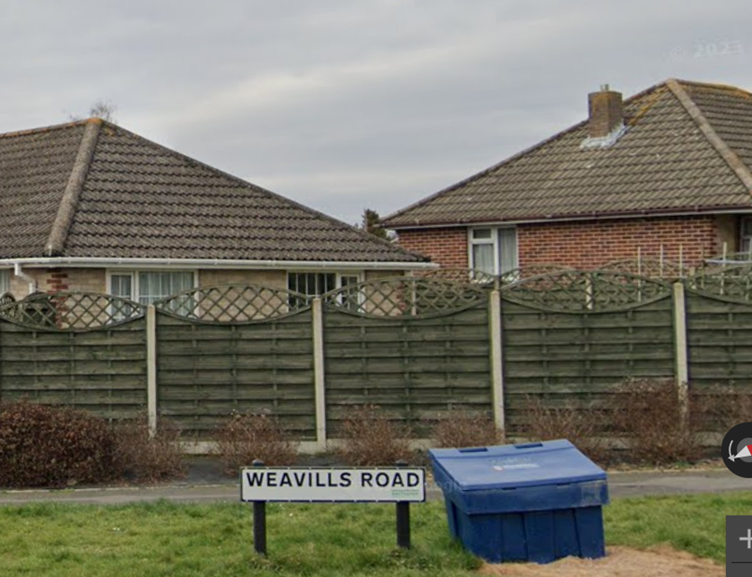
Humans are incredibly conservative about place names and boundaries. If you think you might like this activity (and there is much to do; my class discovered Weavills = wifels) the essay on ‘The Micheldever Forgery’ by Nicholas Brooks in Winchester College: Sixth Centenary Essays (which you can borrow here (p 189-228) or buy on Abe from £3) is a supreme starting place.
Today, Ali and I are enjoying the same activity, on the last morning before the Domesday Scoping Report and its 577 pages of new information explodes into the world we have built from scraps of information. We are doing what the consultants call “ground-truthing”. Reading Old English charters was a transferable skill. We did some of today’s walk with Bob Berzins the first day we met. Now, we see the landscape with more expert eyes.
We head for the north boundary of Calderdale Energy Park (CEP), to pin down the last possibilities for lateral movement across the slope west of Greave Clough. Wind farm access roads don’t like traversing. Sideways tip is called crossfall and 5% is a lot on peat. If you can’t walk briskly over the ground, then the 80-metre turbine blade is not coming that way if there is an alternative. You will see from the map that some of our walk was on easy terrier, but the seven miles took us six hours and the Airedale terrier crashed out when he got home. Alert to anything alien, he barked at a boundary stone on the watershed, like the ape at the monolith in 2001. Our question: “Can a turbine blade be delivered parallel to this ancient boundary?”
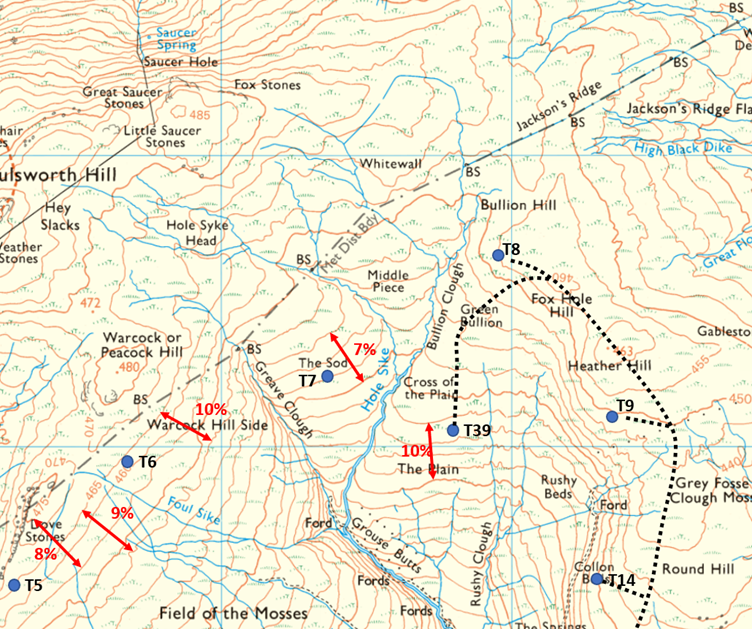
Ali and I can report that a blade might get from T5 to T6, though this would be unusual with 9% crossfall on deep peat. Foul Sike was dry in the great Yorkshire drought of 2024-25. MacKinnons and Sunderlands had lunch at the Hare and Hounds in Lothersdale yesterday (5*: it’s brilliant, and the front of house assistant manager is gold) and they could not give us a jug of tap water. “We need every drop from the borehole in the kitchen!”
Heather Hill down to the reservoirs via T8-T9-T14 is bog standard aggregate track terrain. Project Director Christian Egal can drive his 2CV from T8 to John Getty’s house in Walshaw Dean if Tony Juniper will let him. T7 The Sod is isolated. T37 is doomed like T38/T42.
You can do anything with a bulldozer of course, but T6 does not realistically join to T7, nor T7 to T8 nor T7 to T39. T39 could join to T8 straight up the head high peat hags (done with Ali and Stella in the fog last November), and this is a legitimate wind farm route for gradient and crossfall, but the amount of destruction, and the peat-and-storm drain created, makes T39-T8 absurd on a Special Area of Conservation. No matter how hollowed out they are, no matter how browbeaten by government, Natural England won’t buy T39 to T8. The reason we have to campaign is that we think Natural England will be bullied by ministers, but they have some backbone. Unless Rachel Reeves digs up the law, which would require (amid much else) the repeal of the Environment Act and withdrawal from the Kunming-Montreal GBF which she will have to explain personally to Sir David Attenborough, Natural England should be able to hold some sort of line. Ali and I are preparing the defence of Greave Clough if Tony Juniper sells the pass. The following photographs are a partial record of one reconnaissance.
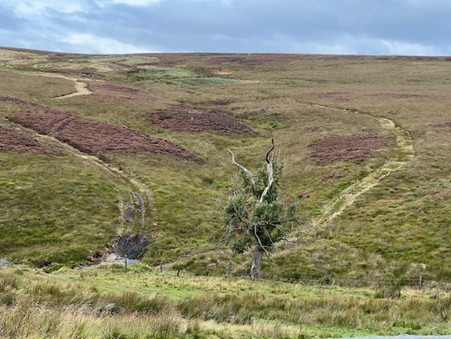
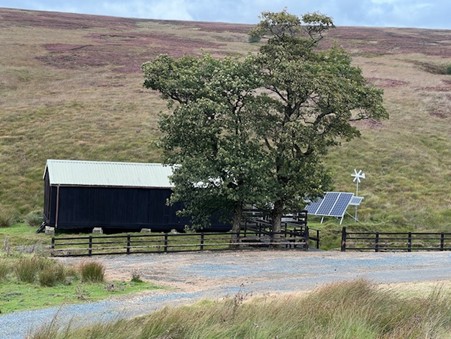
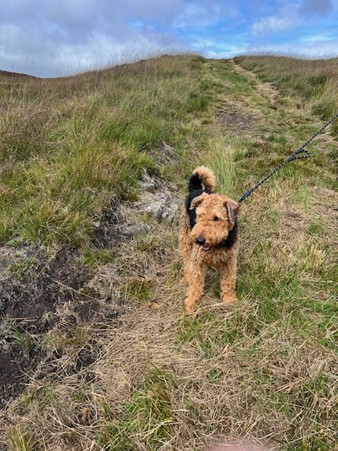
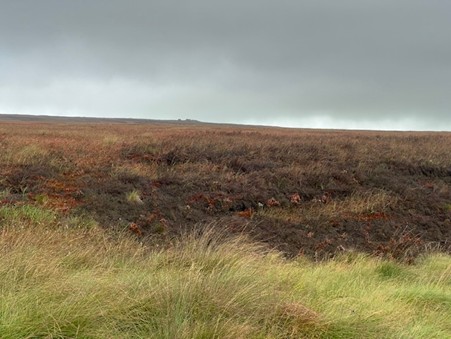
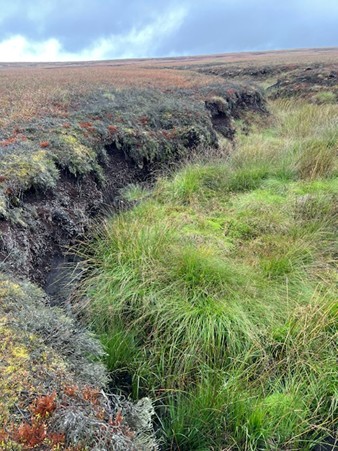
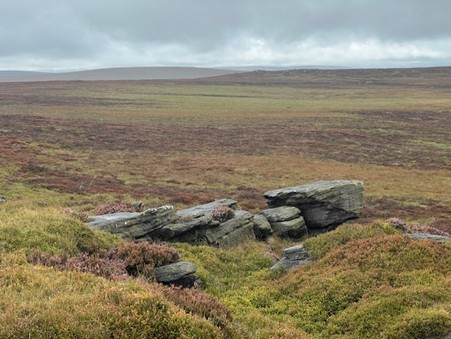
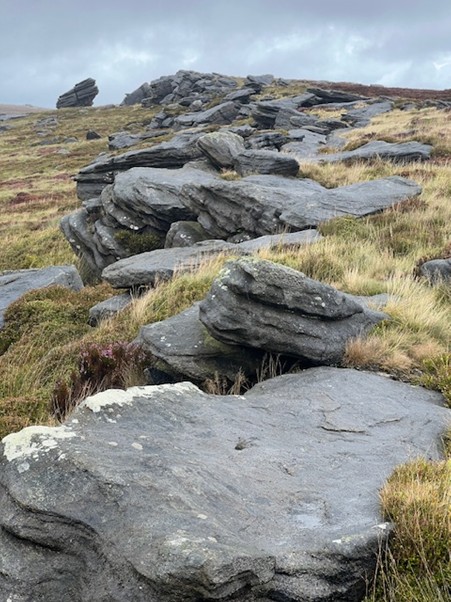
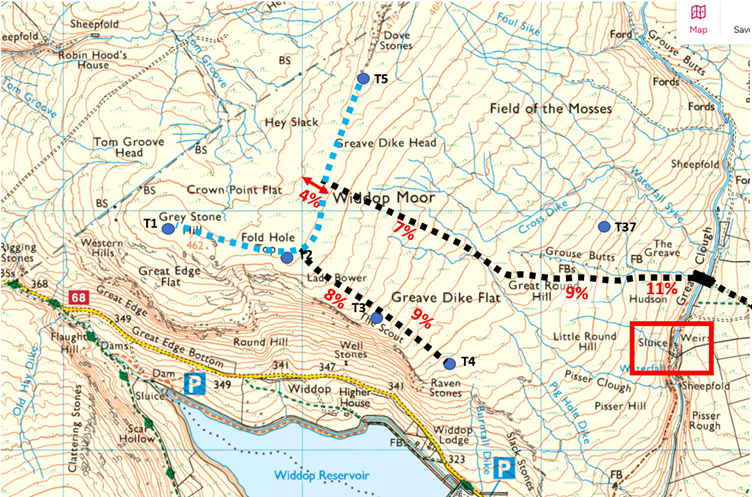
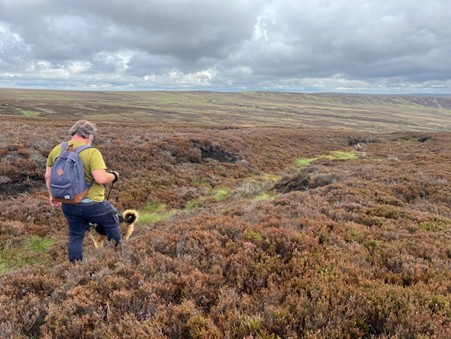
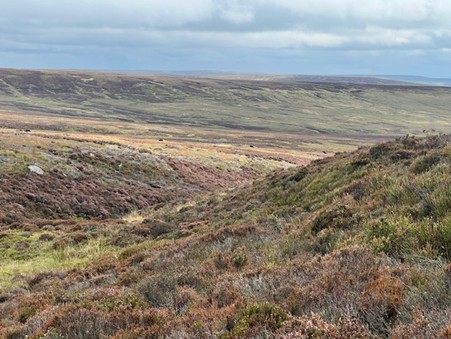
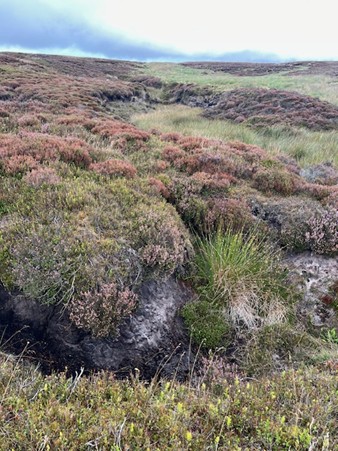
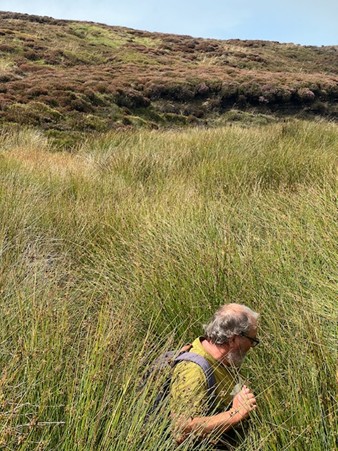
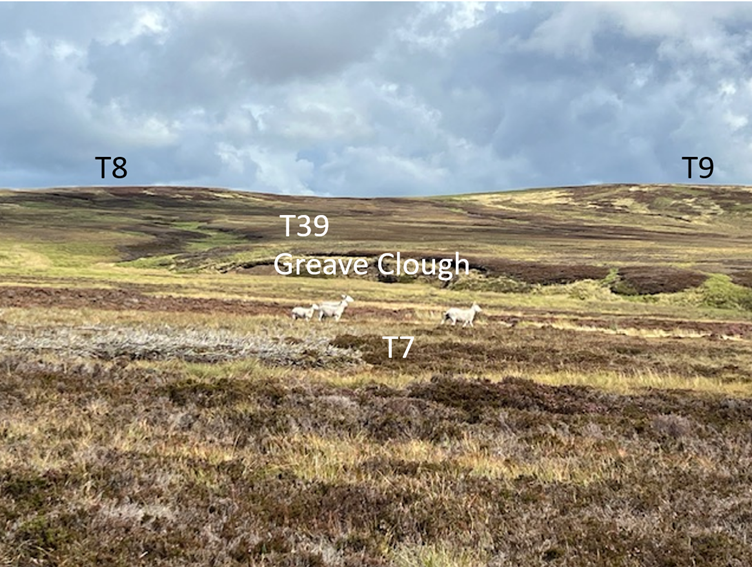
We don’t expect to go out and find a drop-dead reason why CEP won’t work. We accumulate small gains: the onsite rock won’t work for aggregate, and you can hear Donald Mackay finally admit this on the CEP Webinar (21 May 2025, 43:40-45:27) 390 days after we said it first in these blogs; the Crow Hill bog burst of 1824 is still visible; there is a community orchard in Halifax in the path of the blade dolly; Greave Clough is impassable at the top and the bottom but there is a short stretch in the middle that the estate have got a mower up; lateral blade delivery east of Dove Stones is impossible; we picked the right turbine model (Vestas 162-7.2 MWTM) from hundreds when we analysed the aerodynamics…
But that last juicy fact only appears in the sudden explosion of information in the Domesday Scoping Report. Working out the implications of those 577 pages of tight-packed windfarmese might be like rehydrating Domesday into the landscape of England.
Below is the Domesday entry for Wakefield, which contains Walshaw Moor. in the immaculate handwriting of an unknown administrative genius in Winchester, where the Old English civil service, founded by Alfred the Great, had adapted to the new regime. Turning the handwriting back into a populated landscape can be a joy, provided the manor hasn’t been harrowed to waste like Wakefield. Happier entries, like Odiham in Hampshire, rehydrate into a scene from Game of Thrones.
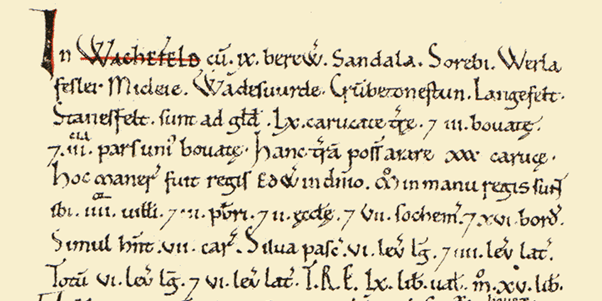
The italics in the version below correspond directly with the handwriting to show that it is not hard to read original Domesday entries, with some help.
In Wachefeld with ix berewicks: Sandala, Sorebi (Sowerby), Werla (Warley), Feslei, Miclei (Midgley) Wadesuurde (Wadsworth) Crubetonestun, Langfelt & Stansfelt are lx carucates (& iii bovates & the third part of a bovate (ploughable area) xxx carucates (plough teams) (may till these lands) Hoc maner (this manor) was King Edward’s regit Edward’s. (There are now in the) manu regis (King’s hand) iiii villanes & iii priests & ii churches & vii sokemen & xvi bordars. They together have vii plough teams. Silva pase (wood pasture) vi leagues lg (long) and iiii leagues lat (broad). Totu (total) vi leagues lg & vi leagues lat. T.R.E. (in the time of King Edward; Harold was a usurper) (it was worth) lx lib (60 pounds per year), (now) xv lib.
The Domesday account of Walshaw Moor itself has only recently been discovered in Halifax. It is the only example in Domesday of land passing from the Norman aristocracy into Anglo-Saxon ownership.
In Walshaw there are five carucates. This manor was in Baron Savile’s lordship. Now in Richard of Colne’s hands. There are two villagers and ten slaves. They have no ploughs. Pasture for 620 sheep. Waste for 1300 gruse. T.R.E. £5; now £1,000,000.
++++++++++++++++++++++++++++++++++++++++++++++++
This is the 44th in a series of guest blogs originally based on the 65 wind turbines which Richard Bannister planned to have erected on Walshaw Moor. Turbines 5, 6, 8, 8CEP, 9, 11, 13, 14CEP, 14, 16, 17, 18CEP, 20CEP, 21, 21CEP, 25, 25CEP, 27, 29CEP, 31, 32, 33, 33CEP, 34, 35, 36, 37, 38, 40, 42, 42CEP, 43, 44, 47, 53, 54, 56, 57, 58, 60, 62, 64 and 65 have already been described.
The developers have canned their original 65 wind turbines, quite possibly in response to the public humiliation of having their so-called ‘plan’ publicly shown to be damaging, irrational and probably unlawful. They have come back with a plan for 42 wind turbines and the amazing Nick MacKinnon and friends have regrouped and set off on a new tack too. The series continues.
To see all the blogs – click here.
[registration_form]




